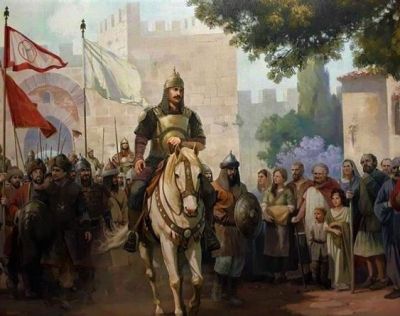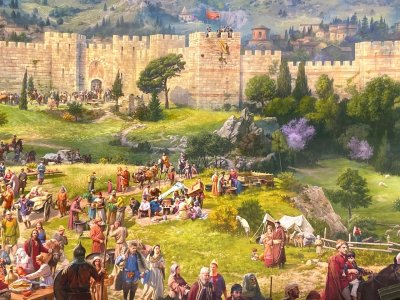
Prousa is the modern city of Bursa, which is just a Turkish transliteration of the same name. Bursa was not an important city in Byzantine history for the most part, it was hardly mentioned until the 12th century. But, it did exist before then. It served as a military base during the era of Justinian, who built a palace there, and it possessed a famous hot spring which drew Emperors from Constantinople as visitors. The city also had strong walls which would prove important in the city’s history.

The city fell to the Seljuks briefly in the 11th century, but Roman rule was restored by the First Crusade. During the Komnenian era, Prousa gained some importance and was thus mentioned more frequently in the historical record. Cities in Anatolia were important as strongholds which held back the Turkish advance while the Emperor, or those he appointed the task to, could bring an army to repel them. In 1184 Prousa rebelled against Emperor Andronikos Komnenos, but he was able to retake the city despite its strong walls.
After the Fourth Crusade, the Crusaders set out to take as much of the Byzantine Empire as they could. The “Latin Empire” centered on the ruins of Constantinople sent forces into Asia Minor to try to take as much land as they could and defeat what was left of the Roman Empire, which was centered on Nicaea. From 1204-1205, Prousa was under siege from the Crusaders but they failed to take it. This was important to hold back the Latins while a new imperial government formed in Nicaea, one which allowed the Roman state to survive and reconquer some lands which had been lost, including Constantinople.

THE ENDGAME:
The city came under major threat from the rising Ottoman beylik in the early 14th century. It was blockaded in 1302 by the army of Osman, and had to pay them to leave in 1304. The Emperors in Constantinople struggled to deal with the declining military situation in Anatolia. A city like Prousa was hard for the Ottomans to take directly, but they could very easily blockade cities and put them under pressure until they surrendered. The Emperors did not have any viable forces which could be sent to defeat the Ottomans in the field. Thus, in 1315 the city was surrounded again and placed under a loose blockade which lasted until 1326. Finally Prousa, seeing that the government in Constantinople could not save them, made peace surrendered on April 6, 1326. It has been known as Bursa ever since.

CAPITAL OF THE OTTOMAN EMPIRE:
Bursa was the capital of the Ottoman Empire for a time, giving it a far increased importance for a brief period. They used this new capital as a springboard to go on and conquer Nicaea and Nicomedia, showing just how strategic Prousa had been. The map below shows how Prousa was right in the center of the rising Ottoman state founded on the ruins of Byzantine Anatolia.

The city suffered again though when the Ottomans suffered their own setback against the Mongols under Timur, who sacked the Ottoman capital in 1402. The Ottomans decided to move their capital to Adrianople (Edirne) after that, until the fall of Constantinople.

SOURCES:
The Oxford Dictionary of Byzantium by Alexander Kazhdan
Cities, Fortresses and Villages of Byzantine Asia Minor by Clive Foss
Encyclopedia Brittanica – https://www.britannica.com/place/Bursa-Turkey

